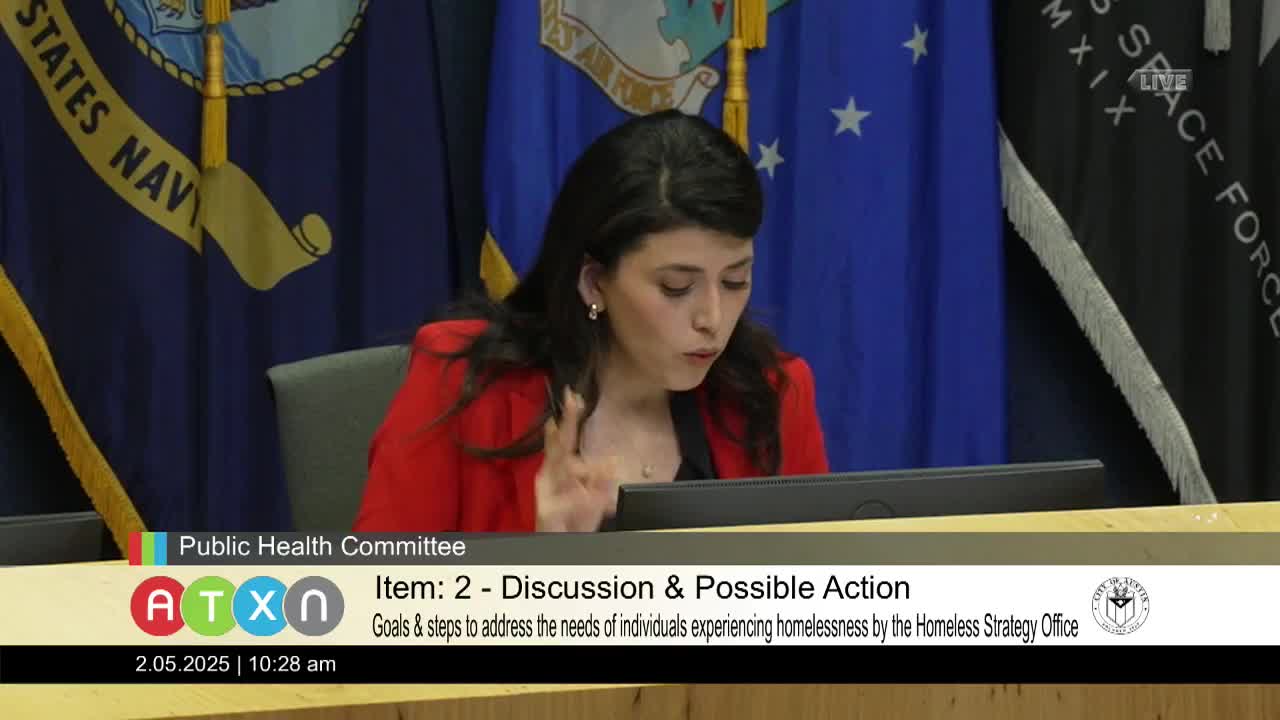Austin's HEAL initiative connects 411 individuals to shelters amid funding challenges
February 05, 2025 | Austin, Travis County, Texas
This article was created by AI summarizing key points discussed. AI makes mistakes, so for full details and context, please refer to the video of the full meeting. Please report any errors so we can fix them. Report an error »

In a recent meeting of the Austin Public Health Committee, discussions centered around the city's strategic plan for addressing homelessness, particularly through the HEAL initiative. The atmosphere was charged with urgency as committee members sought clarity on the progress made in connecting individuals to housing.
A key point of discussion was the current status of the HEAL initiative, which aims to transition individuals from shelters to permanent supportive housing. It was reported that 411 individuals have been connected to shelter through the initiative, although none have yet moved into permanent housing. This figure raises questions about the effectiveness of the program, especially given the target of 50% for those in the HEAL bridal shelter to secure permanent housing.
Committee members expressed concern over the limitations imposed by a freeze on referrals to rapid rehousing programs, which had previously been funded by ARPA. This freeze has left the city reliant on community resources, which are currently insufficient to meet the growing demand for housing solutions. The discussion highlighted the need for policies that would allow individuals to transition from rapid rehousing to more suitable permanent supportive housing options, thereby increasing capacity for new enrollments.
The committee also reviewed the stability benchmarks for housing retention. While the overall success rate across all permanent housing programs in the community was reported at approximately 82%, this figure does not specifically reflect City of Austin-funded projects. Notably, the local retention rate for permanent supportive housing is significantly higher than the national average, standing at around 98%. However, the retention rate for rapid rehousing remains a concern, hovering between 70% and 80%.
As the meeting concluded, it was clear that while progress has been made, significant challenges remain. The committee's commitment to refining their strategies and adapting to the community's needs is crucial as they strive to improve housing stability and support for vulnerable populations in Austin. The path forward will require innovative solutions and a concerted effort to mobilize resources effectively, ensuring that the city's goals align with the pressing realities faced by its residents.
A key point of discussion was the current status of the HEAL initiative, which aims to transition individuals from shelters to permanent supportive housing. It was reported that 411 individuals have been connected to shelter through the initiative, although none have yet moved into permanent housing. This figure raises questions about the effectiveness of the program, especially given the target of 50% for those in the HEAL bridal shelter to secure permanent housing.
Committee members expressed concern over the limitations imposed by a freeze on referrals to rapid rehousing programs, which had previously been funded by ARPA. This freeze has left the city reliant on community resources, which are currently insufficient to meet the growing demand for housing solutions. The discussion highlighted the need for policies that would allow individuals to transition from rapid rehousing to more suitable permanent supportive housing options, thereby increasing capacity for new enrollments.
The committee also reviewed the stability benchmarks for housing retention. While the overall success rate across all permanent housing programs in the community was reported at approximately 82%, this figure does not specifically reflect City of Austin-funded projects. Notably, the local retention rate for permanent supportive housing is significantly higher than the national average, standing at around 98%. However, the retention rate for rapid rehousing remains a concern, hovering between 70% and 80%.
As the meeting concluded, it was clear that while progress has been made, significant challenges remain. The committee's commitment to refining their strategies and adapting to the community's needs is crucial as they strive to improve housing stability and support for vulnerable populations in Austin. The path forward will require innovative solutions and a concerted effort to mobilize resources effectively, ensuring that the city's goals align with the pressing realities faced by its residents.
View full meeting
This article is based on a recent meeting—watch the full video and explore the complete transcript for deeper insights into the discussion.
View full meeting
